- Administrator
- Albums and Singles
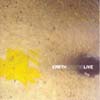 Obviouslytrying to reaffirm his status as the king of drones, Carlson has beenreleasing a steady stream of records this year. This is the second livealbum to be belched up this year and it is a patchy affair.
Obviouslytrying to reaffirm his status as the king of drones, Carlson has beenreleasing a steady stream of records this year. This is the second livealbum to be belched up this year and it is a patchy affair.
Sometimesit shines like a well polished Sunn amp and other times the sound is asdull as the stuff that Earth take their name from. Having never seenEarth live I have to wonder is there something missing from some of therecordings as they seem dreadfully hollow. Carlson’s guitar sometimessounds thin and lacks the menace of the studio releases. Instead ofbeing gut wrenching it is more of a nasal whine. However 070795 Live is a far better release than Earth’s other live album this year, Living in the Gleam of an Unsheathed Sword. The song “Dissolution III” appears on both albums but on 070796 Liveit has more vibrancy and sounds fuller, the previous release was tootinny to really get into the music. Unfortunately it still sounds likesomething is missing from the track. “Dexamyl” and the title track aremore like what I expect from Earth. It is the sound of a band flexingits muscles before delivering that punch that will knock down allpretenders to the throne. The remix (or reconstruction to use the linernotes’ parlance) of “070796” tacked on to the end of the album destroysall of its might and instead waters down Earth’s strengths. On Legacy of Dissolutionall the remixers hit the nail squarely on the head but James Plotkindeserves to be hit on the head himself. I would have thought he wasmore than suited to the job with his metal credentials but alas I waswrong. Had this album been released as a two track EP I would besinging Carlson’s praises and slapping the people at Autofact on theback but thanks to some awful remixing and poor sound on half the albumI am reluctant to go near any future releases of Earth’s live shows.Hopefully the forthcoming studio album on Southern Lord will allay myworries about Earth’s legacy.
samples:
Read More
- Administrator
- Albums and Singles
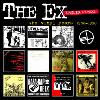 After nearly 30 years of defying the system, it seems that The Ex are ripe for a retrospective. This isn’t necessarily surprising, given the overwhelmingly positive response that greeted last year’s Turn.
After nearly 30 years of defying the system, it seems that The Ex are ripe for a retrospective. This isn’t necessarily surprising, given the overwhelmingly positive response that greeted last year’s Turn.Covering the early portion of their career, Singles. Period. focuses on exactly that. From 1980 to 1990, The Ex released a spate of vinyl-only singles that, as the liner notes suggest, hinted at what was to come on future albums. The chronological sequencing of this album proves beneficial, as The Ex develop from a sloppy, Oi-inspired band of rabble rousers to a precise, angular machine. Early singles like “Human Car” and “Stupid Americans” are rough hewn and amateurish. It seems that at this early stage, the band was very much inspired by the inflammatory spirit of the Clash and other early anarcho-punk bands like England’s Crass. These early singles are really only notable in that they place the evolution of The Ex in context. The first really great song here is “Weapons for El Salvador,” where the drumming is slowed to a marshal shuffle, and a stubborn guitar figure is repeated throughout. Meanwhile, vocalist G.W. Sok spouts lyrics seething with rage and discontent. The following track “Dust,” features guitar playing during the verses that is not unlike DNA or other no-wavers. “When Nothing Else is Helpful Anymore” features some truly inspired guitar playing while the rest of the band engages in a stubborn reggae jam. This song, along with the rest of the songs that formed the Gonna Rob the Sperm Bank single seem to be the first real peek into the future for listeners. Whereas earlier works aped the spirit of ’77 for both message and sound, this single found the band placing much more emphasis on rhythm and texture, something that would begin to inform much of the group’s later work. While many may question the point of a singles collection for this particular group, for the band’s fans it is a real treat. Many of these singles were out of print and nearly impossible to come by. While the music may be spotty at times, it is nonetheless worthwhile in that it showcases the evolution of a band who would go on to make some of the more confrontational and challenging punk rock of the 1990s.
samples:
Read More
- Administrator
- Albums and Singles
Petitions will be delivered to Congress starting Friday morning so senators and representatives will hear what you think the very next day.
Click here to sign the petition to demand an independent Katrina Commission.
Read More
- Gary Suarez
- Albums and Singles
Petitions will be delivered to Congress starting Friday morning so senators and representatives will hear what you think the very next day.
Click here to sign the petition to demand an independent Katrina Commission.
Read More
- Administrator
- Albums and Singles
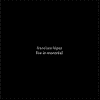 As a bigbeliever in sensory deprivation in pursuit of a better listeningexperience, Francisco López has gratiously included a blindfold with his latest one-track live CD. As criticalanalyses of blindfolds go, my review is damning.
As a bigbeliever in sensory deprivation in pursuit of a better listeningexperience, Francisco López has gratiously included a blindfold with his latest one-track live CD. As criticalanalyses of blindfolds go, my review is damning.
Alien8 Recordings
The flimsy materialof a blindfold does nothing to restrict vision apart from making things a littledarker. Dispensing with the blindfold I decided to just listen to theCD in the dark. What the piece of cloth does for blindfolds, Lopez doesthe opposite for music. Live in Montreal is mesmerising. A lowhum pervades the piece, creating an atmosphere of warmth and danger. Itsounds like heavy machinery working deep beneath the ground and indeedthe room tremors like there is something pulsing from below. Lopezinterweaves other hums and deep booms on top of the main sound, attimes I felt I was in a deep cavern and something was coming towards me(think of HP Lovecraft writing the scene with the trembling cup ofwater in Jurassic Park). When Lopez finally lulled me into somesort of security he releases the odd unpredictable clamour orunexpected silence to shock me back into paying attention. Lopez usesthe old combination of found sounds and drones in a refreshing manner,what appears to be a recording of rain on a metal roof is processedsubtly to become what I imagine electricity firing through your nervoussystem would sound like. The one caveat with Live in Montrealis that it needs a decent stereo system, the range of sounds Lopez usesis immense. At times the graphic equaliser on my stereo couldn’t evenregister the sounds. Lopez is incredibly skilled in creating sonicsculptures and this album has captured his talent very faithfully.
samples:
Read More
- Administrator
- Albums and Singles
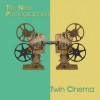 The New Pornographerssound friendly and homey, and listening to Twin Cinema reminds me ofall those times I've attended carefully-planned parties thrown byfamilies of slightly tipsy identical twins.
The New Pornographerssound friendly and homey, and listening to Twin Cinema reminds me ofall those times I've attended carefully-planned parties thrown byfamilies of slightly tipsy identical twins. Matador
Vancouver's super-group has released their third album of jangly,beautiful, meticulously-crafted pop. It's joyful. It'sheartfelt. Every note is perfect, every beat is in lockstep,every instrument has been equalized for maximum integration; it's likelistening to a warm diamond, or an outtake from a George Martinrecording session...one starring a lot of musicians with endless ideasand a fondness for diluted psychedelia. But when theperfection of it all becomes cloying (especially the crispness of theinstruments and the hey-hey "sing-along" style of the vocals), or whenthe lyrics get too annoyingly ambiguous and arty-farty, it's still hardnot to enjoy what Twin Cinema strives to be and achieves: an album ofpop songs which just plain sound good.
samples:
Read More
- Administrator
- Albums and Singles
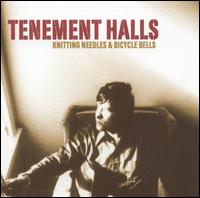 This is the first solo album from former lead for Rock*A*Teens, a bandso good that they will be forever underrated no matter how many times they’repegged as the archetypal underrated band.
This is the first solo album from former lead for Rock*A*Teens, a bandso good that they will be forever underrated no matter how many times they’repegged as the archetypal underrated band.Merge
People will pan this record. The title is pretty bad; even the bandtitle I don’t really like. Probably it should have been called “ChrisLopez” because this is Chris Lopez’s music, just like all thosebrilliant Rock*A*Teens albums. The Rock*A*Teens who haunted my youth,who like O’Connor and Faulkner and Walker Percy and Barry Hannah had anew world language to create but hadn’t yet because everything from theSouth happens that way. Who came from some imagined Cabbagetown outsideAtlanta with nothing but burned-out cars, streets full of shingles andthe only roofed structures the empty airplane hangers where teenscovered in reverb blasted science fiction rockabilly up to streetlightsmistaken for spotlights that were in fact searchlights, as theDestroyer’s one-sheet would have it. Eventually the teens grew out of“I’m Your Puppet” covers and into reinterpreting the classics throughan even foggier lens, meant to include southern soap opera romantics,abstract car accidents and huge aerial visions of the American state,macro-dramas condensed into 18’s white-boy soul stretches and yelpedout as if this-here-were the last song he/I will play and you/I willever hear. The band was struck down, and Lopez stayed on. Once he was“doomed,” as Bejar would have it again, but today he is still alive.Tenement Halls are no teenage tenement film reel. There is notelevision; no one is hunched over bad cooking; no one is beaten orbeating; no corpse goes weeks without being noticed. It sounds like theRock*A*Teens woke from their dream, Lopez got sad about it, so he’swriting songs to ignore it. Every song here is about love and duration;every voice in every song is love-sick. There is less of the teenagecamaraderie gung-ho-we’re-doomed! atmosphere, less concern for what’soutside that window. Songs about Charlemagne and swifts coming homecover a man’s version of love, fitted to Memphis traditions, with theair of Byzantine myth. Lyrics are simpler, much less ambitious thatLopez’s days with the Teens, even at their youngest, but, somehow, theyfeel more genuinely desperate. There are less theatrics and lessreverb, but you can hear the voices of teens grown up and still in thesame place; it’s sad but an essential part of that legacy. It’s lessfun; there’s less escape, less songs about AM radio, death jazz orCherry Red compilations, despite the title’s easygoing. Maybe havingextreme reverence for the Rock*A*Teens is necessary for enjoyingKnitting Needles; maybe it is a maturity issue. All I know is that timeis such a part of these lyrics that it’s impossible not to think abouta past with this music, any past. That’s fine; I wouldn’t have wantedit came without a fight anyway. Keep on, Christopher Lopez, you arestill needed. Bonus: even though the record was played and producedalmost entirely by Lopez, it’s still got some of thatwall-of-sludgy-reverb-Rock*A*Teens sound.
samples:
Read More
- Administrator
- Albums and Singles
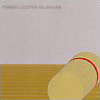 Released on UnitedDairies in 1984, Hausmusik is part ofa dramatic transitional period for Tietchens in which he abandons the vintagespace-age lounge music of earlier releases (see all the brilliant, trulyunclassifiable major ones reissued by Die Stadt) for a more spatially adaptabletechnique, far from the pop format and owing more to the sound and vision nowinsufficiently classified as early industrial music.
Released on UnitedDairies in 1984, Hausmusik is part ofa dramatic transitional period for Tietchens in which he abandons the vintagespace-age lounge music of earlier releases (see all the brilliant, trulyunclassifiable major ones reissued by Die Stadt) for a more spatially adaptabletechnique, far from the pop format and owing more to the sound and vision nowinsufficiently classified as early industrial music. Sixth in Die Stadt’s commendable Tietchens reissue project, Hausmusik enjoys something of a mythicalstatus within the artist’s overwhelming body of work, alongside otherlong-out-of-print releases like his series of Terry Burrowscollaborations. Still a young label, U.D. releases up to thispoint reflected more than ever the DIY spirit of Stapleton’s enterprise, themusic rooted in kitchen sink sound sourcing, abrupt cuts, and dense swaths ofprimitive acoustic noise, watermark: Insectand Individual Sliced. With Hausmusik, Tietchens essentially dropsthe first truly stoic and sophisticated release on the label, beginning thecrescendo that would produce the first singular NWW works. Inside the liner notes of this reissue a notein facsimile from Stapleton to Tietchens: “I nearly fainted, never before haveI heard music which so touched my heart…have you had classical training?” The idea of “classical training” going intoan earlier Tietchens album like Biotopis laughable in the best way, but Stapleton’s question illustrates the greatdivergence taking place on Hausmusik. The “dramatic transition” means a droppingout entirely of the retro atmospheres and quirky synth-play that madeTietchens’ first recordings by turns humorous and unsettling. Their replacement is an acetic environmentflowing out from this record as if it had existed for millennia, a carnallandscape with none of Stapleton’s early cheekiness and all of his texturalmastery. The sound is a broad-strokedcombination of stringed instrumentation, accordion, abrupt concrète tapetwisting, and dying electronics, grouped and mashed through effects into adense, effervescent layer. The hollow,cold-metal-in-space vibe of the earlier “pop” albums is now a craggy, petrifiedprimitive. Those familiar withmid-period Tietchens will notice certain rough edges to the mix, excessivetouches, and abrupt changes or endings later to be ground down, but these canalso be a source of appeal and work nicely to bleed the obvious excesses of hisearlier releases into new forms. Accordion flourishes in “Volkafest” recall Biotop-era bounciness but are buried in thethick airs of more powerful transmissions, sounds of a whining earth. “Studie für Klavier” might’ve been recordedyesterday, perfect drone for the exorcism-folk trend. Tietchens’ experimentation with naturallyresonant instruments shows itself on Hausmusikfor the first time, and it’s no wonder Stapleton heard a kindred spirit atwork. The bonus tracks, which most fansof late 80’s-onward Tietchens will dismiss as sounding too “improvisational” orsome shit, especially sculpt the artist’s ear as something in tune not just tothe sound’s ghost after optimum distortion, but to the spaces between atrilling scraping, to the movement of a hand as mapped by the quiveringfrequency structure one half-step too quick or one-notched frequency too shrillfor your automatic interpretive listening “method.” Today, as Tietchens seems more concerned withexorcizing the ghosts latent in the digital pulverizing of existing sources,it’s time to revisit some of his less-meta constructions. Titles like “Studie für Glasspiel” and“Studie für B-A-C-H” signify simple means expanded or exploded across a thoughtprocess bent on discovering new soundworlds within inches of thoseimmediate. I can hear many thingsfloating in with this music, the least of which is Tietchens’ next two decadesas a composer and figurehead. U.D.freaks will no doubt already have jumped on this, but it also makes the perfectintroduction to the artist for new listeners. Bonus: another beautiful packageby Die Stadt, including large glossy prints of Tietchens’ original cover artand the Babs Santini art of the first pressing.
samples:
Read More
- Administrator
- Albums and Singles
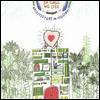 Thoughthey are comfortable in a number of guises, be it twee girl-boycrooning, electro-clash, or baroque chamber pop, Architecture inHelsinki clearly have trouble staying focused on one idea, and thoughit can be an endearing, it gives the album a feeling of beingunfocused.Bar-None
Thoughthey are comfortable in a number of guises, be it twee girl-boycrooning, electro-clash, or baroque chamber pop, Architecture inHelsinki clearly have trouble staying focused on one idea, and thoughit can be an endearing, it gives the album a feeling of beingunfocused.Bar-NoneArchitecture in Helsinki is eight members, all of whom play several instruments, coming together tomake pop music that bursts at the seams with restless enthusiasm.“It’5” features sticky sweet “oh’s” and “ah’s” that ride along a musichall beat. The Australian octet’s penchant for creating music that isat once playful and skilled is on clear display on “In Case We Die (Pt.1-4),” where goofy synthesizers slowly fade into marshal drumming andmournful violins while the band shout the chorus amid the sound ofbursting fireworks. Elsewhere, a healthy pilfering of the past informsmany of the songs on In Case We Die. “Do the Whirlwind” sounds likeWham! (Wait, come back!) with horns and intricate percussion. Individual songs work well, but as a group, these songs havetrouble forming one musical identity. Ultimately, it’s the charisma ofindividual songs that power this album. “The Cemetery,” which clocks inat barely over two minutes, is the strongest pop song of the batch andis the best distillation of Architecture in Helsinki’s musical forté.The peppy guitars and call and response vocals of the verse meldseamlessly into the breakneck new wave inspired chorus, allowing thesong to be infectious and accomplished all at once. Though there havebeen a glut of adventurous pop bands in recent years, Architecture inHelsinki manage to separate themselves from the pack with their adeptsong writing skills and a sense of whimsy that is sorely lacking inmany of their peers.
samples:
Read More
- Administrator
- Albums and Singles
 This long overdue double-disc compilation not only makes Comus' superlative First UtteranceLP widely available at an affordable price for the first time, it alsoincludes the legendary band's oft-ignored second album and a handful ofrare tracks, singles and b-sides.
This long overdue double-disc compilation not only makes Comus' superlative First UtteranceLP widely available at an affordable price for the first time, it alsoincludes the legendary band's oft-ignored second album and a handful ofrare tracks, singles and b-sides.Previously, the only way to hear muchof this music was to track down the original Pye/Dawn LPs, whichfrequently trade hands for upwards of a thousand dollars for a VG+copy, or to buy one of the exorbitantly priced bootleg CD reissues thathave surfaced on Korean and Japanese labels over the years. Indeed, First Utteranceis probably the ultimate psych-folk Holy Grail, a storied and obscurealbum that more than earns its reputation. In writing this review, Ihad to make an effort to remain as dispassionate as possible, as First Utteranceis certainly one of my top five favorite albums of all time, and I'vebeen obsessively trying to uncover its mysteries over the period ofeight years since I first heard it. This album, along with Jan Dukes DeGrey's Mice and Rats in the Loft, is probably the truestmanifestation of the genre sometimes called "progressive folk," assongs with a distinctly Brit-folk vibe are stretched out into dynamic,multi-part convocations, joined together with instrumental passages ofacoustic guitar, reeds and hand percussion. Far from being the sort ofcontrived, antiseptic art-rock normally associated with the"progressive" tag, the music made by Comus is fierce and visceral,passionate and intense, living in an ever-present now. To listen to First Utteranceis to be kidnapped by cult of forest-dwelling mages and witches, whodrug you, blindfold you, strip you naked and convey your cold,quivering corpus to a clearing in the woods, where you are forced toparticipate in an ancient initiation rite. Along the way areinvocations of the huntress-goddess Diana, chilling murder ballads,songs of praise to a malevolent demon, stories of necrophilia,crucifixion and insanity. There are moments of fragile, pastoral beautyon First Utterance, but they are interrupted at unpredictableintervals by the frightening howls, growls and vocal ululations ofsinger Roger Wootton. It's frequently amazing just how much power andferocity the quintet are able to pull out of their completely acousticinstruments, making the album also function as a sort of unpluggedproto-Metal album. Songs seem to slither and pulsate, with their ownphantasmagorical logic, traveling from innocuous nature hymns setagainst placid folk music, to anarchic, tribalistic surrenders to thenightmarish and Satanic, often within the same song. This frighteningdynamism led David Michael Formerly Tibet to declare that First Utterance was his favorite album of all time, and Current 93 covered "Diana" on their HorseyEP. The band is also on the Nurse With Wound list, and are frequentlynamechecked by a slew of recent "freak-folk" acts, many whom, shall wesay, have "borrowed" their eccentricities from Comus' monolithic LP.Besides a great remastering job, which renders the album clearer andlouder than ever before, this package also includes extensivebiographical notes, photographs and reproductions of the LP art. Thisdouble-disc set also includes the entire Diana 12" maxi single,which contained two seldom heard b-sides, as well as a previouslyunreleased track ("All the Colours of Darkness") very much in the samevein as the First Utterance material.
And then there is disc two, which contains Comus' much-maligned sophomore effort To Keep From Crying. The album was released in 1974 on Virgin Records to very little fanfare, much like the first record, only in the case of Crying,its failure was very much deserved. In fact, the more I listen and tryto reconsider my opinion about Comus' artistically compromised secondalbum, the more I am convinced that it is absolutely the worst secondalbum I've ever heard. The edgy, insanely creative and instrumentallyproficient Comus from the first album is nowhere in sight, and in itsplace is nothing but a throwaway piece of MOR folk-rock fare, poorlyproduced and containing no memorable songs. Apparently the album wasmade rather begrudgingly by a band that, only a few months before, haddecided to break up for good. This lack of elan is clearly in evidenceon To Keep From Crying, and though I can't help but think thatI might like the album better were I not comparing it to a masterpiecelike First Utterance, it doesn't change the fact that this is indeedthe same Comus who recorded that great LP, and it's downright tragic.The band members interviewed for David Wells' liner notes allude totheir desire at that time to record an album that would be more likelyto sell. Money and fame have never been particularly good motivatingfactors for great art, and this just proves it once again. However,even though I don't care to listen to Comus' second album ever again, Imust say that it certainly belongs on any CD that's going to callitself Song to Comus: The Complete Collection, andcongratulations go to everybody for going the extra mile to makethis a truly complete release. On the basis of disc one alone, this isthe reissue of the year.
samples:
Read More
- Administrator
- Albums and Singles
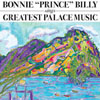 Any attempt at summarizing Will Oldham's pre-millennial output underthe Palace name will necessarily be a difficult, even defeating task.Like that of any great songwriter, Oldham's body of work visits amultitude of distinct voices, illustrated by his undeniable lyricaldensity and legendary dissatisfaction with any kind of stable moniker.If one constant could be established, at least among his Palacerecordings, it might be the ingredient of self-doubt: that healthyfrailty that seems to provide the characteristic, tortured quiver inevery vocal; the half-sardonic/half-serious tension that fills everyother line; and the regular shifts in both the dominant persona andstylistic frame of each record. The artist's stubbornness duringinterviews has guaranteed that his songs remain the only windows intohis life, and they do create an incredibly human picture: passionate,diverse, and perpetually uneasy: always second-guessing, experimentingwith, and even contradicting his methods. Anyone who's seen Oldham livecan attest to his tendency to perform even the most sacred of fanfavorites in ways completely alien to their recorded versions, and thiskind of behavior—while aggravating for a sorry few—is largely whatkeeps him such a vibrant figure, refusing to let his music perch idlyin the ivory tower of indie, alt country, folk noir, or whatever set ofrules comes closest to housing his talent as of late.Over the decade since the first Palace record (still-)interestedparties should be used to having their expectations thwarted. In truecountry style, Oldham's Bonnie Billy has taken some Palace favorites(nominated by fans, supplemented by the artist) and rerecorded them inNashville with the city's finest session men and women. It's honestlyhard to think of Oldham agreeing to this kind of collection withoutturning it to parody. The session turns fifteen of his most fragileanthems and cryptic ballads to full-blown golden country greats, fullof enough pedal steel, fiddle and haggard crooning to make the mostdie-hard fan wince more than once. The result is equal partscelebration and satire, for as much as Oldham is having fun playinginto the C & W stereotype (at the expense of those emotionallyinvested in the originals, of course), he is obviously trying hard tomake each new version a thoughtful reworking. The artist's admitteddesire to rerecord several tracks no matter what the voted result("Viva Ultra" and "No More Workhorse Blues" among them) points to agenuine interest in revisiting older material as an older man, withboth wise distance and obvious affection. Oldham knows that this newbatch will never replace the old, and he's aiming this collection atthose well enough acquainted with Palace history to ease up attachmentsand take a long, joyful look back through the eyes of a different man.Some moments are sublime, more are shockingly different, and many aredownright painful, but Greatest Palace Music is absolutelyessential for any previous fan of Oldham, if only for a furtherchiseling of one of the roundest characters in contemporary music. NewPalace listeners, however, should be warned; start here at your ownrisk. Greatest's appeal, or lack thereof, relies on priorexposure to the originals, and if you somehow come to like this withouthearing its origins then we surely have some sort of postmodernconundrum on our hands?probably what Oldham wanted all along.
Any attempt at summarizing Will Oldham's pre-millennial output underthe Palace name will necessarily be a difficult, even defeating task.Like that of any great songwriter, Oldham's body of work visits amultitude of distinct voices, illustrated by his undeniable lyricaldensity and legendary dissatisfaction with any kind of stable moniker.If one constant could be established, at least among his Palacerecordings, it might be the ingredient of self-doubt: that healthyfrailty that seems to provide the characteristic, tortured quiver inevery vocal; the half-sardonic/half-serious tension that fills everyother line; and the regular shifts in both the dominant persona andstylistic frame of each record. The artist's stubbornness duringinterviews has guaranteed that his songs remain the only windows intohis life, and they do create an incredibly human picture: passionate,diverse, and perpetually uneasy: always second-guessing, experimentingwith, and even contradicting his methods. Anyone who's seen Oldham livecan attest to his tendency to perform even the most sacred of fanfavorites in ways completely alien to their recorded versions, and thiskind of behavior—while aggravating for a sorry few—is largely whatkeeps him such a vibrant figure, refusing to let his music perch idlyin the ivory tower of indie, alt country, folk noir, or whatever set ofrules comes closest to housing his talent as of late.Over the decade since the first Palace record (still-)interestedparties should be used to having their expectations thwarted. In truecountry style, Oldham's Bonnie Billy has taken some Palace favorites(nominated by fans, supplemented by the artist) and rerecorded them inNashville with the city's finest session men and women. It's honestlyhard to think of Oldham agreeing to this kind of collection withoutturning it to parody. The session turns fifteen of his most fragileanthems and cryptic ballads to full-blown golden country greats, fullof enough pedal steel, fiddle and haggard crooning to make the mostdie-hard fan wince more than once. The result is equal partscelebration and satire, for as much as Oldham is having fun playinginto the C & W stereotype (at the expense of those emotionallyinvested in the originals, of course), he is obviously trying hard tomake each new version a thoughtful reworking. The artist's admitteddesire to rerecord several tracks no matter what the voted result("Viva Ultra" and "No More Workhorse Blues" among them) points to agenuine interest in revisiting older material as an older man, withboth wise distance and obvious affection. Oldham knows that this newbatch will never replace the old, and he's aiming this collection atthose well enough acquainted with Palace history to ease up attachmentsand take a long, joyful look back through the eyes of a different man.Some moments are sublime, more are shockingly different, and many aredownright painful, but Greatest Palace Music is absolutelyessential for any previous fan of Oldham, if only for a furtherchiseling of one of the roundest characters in contemporary music. NewPalace listeners, however, should be warned; start here at your ownrisk. Greatest's appeal, or lack thereof, relies on priorexposure to the originals, and if you somehow come to like this withouthearing its origins then we surely have some sort of postmodernconundrum on our hands?probably what Oldham wanted all along. Read More

